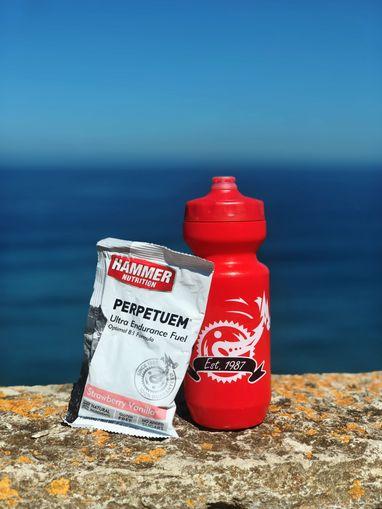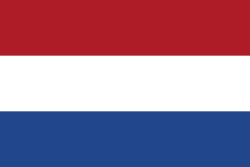In this article, Franz Josef Laesser, one of our Hammer Ambassadeurs, will share with us reflections on the path that led him from soccer to para-cycling. Adaptability (no matter the physical condition), willpower, assiduity in training and the correct nutritional choices prove once again to be the right recipe for overcoming obstacles that may seem insurmountable!
THE PATH FROM SOCCER TO PARA-CYCLING WORLD CUP
I was born on January 17th, 2001 in Graz and grew up in Stattegg. I have been drawn to mountain biking since I was a child. I am missing four fingers on my left hand from birth, and the thumb is additionally shortened. In my case, soccer training was more suitable than mountain biking. That didn't work for long because I wanted to win races rather than score goals!
After that, I regularly went to train at the Stattegg Bike Club, where I quickly realised that I was carrying around a not inconsiderable handicap.
Racing bike handlebars make it difficult or almost impossible to mount both brakes on one side, as there is (usually) no real need for it. My father had a special handlebar (see picture) made for me. The left side was replaced by a tapered piece of titanium (unfortunately, the aluminium broke off several times, including while riding a wheelie).
I ride with a brake adapter that combines both brakes on one lever. (so you brake with your middle and index finger). Apart from the mountain bike, I am now also very much into road biking, Now, my physical limits are mitigated thanks to this little piece of unconventional technology.

In a mountain bike cross-country race, I simply have to be able to brake differently at the front and rear due to the different terrain requirements (over hill and dale), since there are situations (curves, descents of different steepness, underground, ...) where I sometimes put more emphasis on the need for front or rear brakes. The most important thing is to have enough stopping power.
From mountain bike to racing bike...
To cut a long story short: Due to my handicap, I always felt that I was doing better than everyone else when I was on track. I felt no less fast than the others, which gave me a good drive and motivation. I then accumulated several podium places during my youth at Austrian Cup races and Austrian championships. But, the more professional and international the whole thing became in the junior years (2018/19), the more I realised that although I can physically perform at the global top-level, the result would not be enough due to my handicap.
At the age of 18, I was 56th in the Junior World Ranking in mountain bike XC. Also, I finished 10th in the Elite EM in the XC Eliminator, realising that this discipline would become more complex than easier in the upcoming years.
At the end of 2020, in my first U23/Elite year, I contacted the para-cycling national team coach for the first time. After that, I started my first Para-Cycling World Cup in spring 2021. I finished 20th in the World Cup in my first 30km time trial and 15th in the road race, followed by a super cool gold medal at the European Championships.
Since longer, more constant endurance competitions are now more beneficial to me and my handicap than short & aggressive races, my training and competition focus is shifting from 1.5-hour MTB cross-country races to 2-5 hour road, para-cycling and MTB marathon races. This is why sports nutrition, in particular, is becoming more and more critical.

How did I get to Hammer Nutrition?
I graduated from high school and am currently doing remote studies in nutritional science. Since I cook a lot and like to do practical, health-and-performance-oriented cooking, I am very detail-oriented in nutrition.
In my opinion, getting involved in international top-class sport requires more than consistent and qualitative training. When I say "more", I primarily mean performance-optimised nutrition. If I combine exercise and nutrition effectively, I'll have the opportunity to be at the forefront, not taking into account other influencing factors such as genetic predisposition or willpower.
As far as sports nutrition is concerned, I have mainly mixed my competition drink mixtures myself with maltodextrin, fructose and salt, or I have also purchased energy gels from various suppliers.
That's because I have never really been satisfied with the product range and product concept of any sports nutrition manufacturer. In other words, I was convinced that I could mix the same sports drink mix myself with the same effect using better (in the sense of "more sustainable"), organic ingredients. And spending less, possibly.
Of course, there are enough manufacturers producing good products, but just like in school, you don't want a "B" but an "A".
Not long ago, I was introduced to Hammer Nutrition by my roommate, who used Perpetuem sports drink. As usual, I just wanted to draw attention to the crap the product is likely to contain.
But after curiously studying the list of contents, I concluded that this is an excellent product that I had to try at the next opportunity.
Perpetuem - my new POV over sports drinks!
I often tried the Perpetuem mix on longer training sessions (>150 km) in the time that followed. Among other things, I drove several 200km training laps with it. Also, I implemented it my longest one-day training ride, which had been planned for a long time. This went across Slovenia, from Graz to Venice, which was 445 km and 14 hours at an average speed of almost 33 km/h. The ride worked surprisingly well with Perputuem, so much better than with my simple sports drink of my own. It's easy to guess that Perpetuem Sportdrink is my absolute favourite product.
Subsequently, I took a closer look at Hammer Nutrition and its philosophy. It was clear that at least one sports nutrition manufacturer deserves an "A++".

I'm looking forward to the next race season with Hammer Nutrition by my side, and I'm confident that I'll be able to set some new personal (or world?) records!!






